Stress leave is an essential component of modern workplace health practices, which reveal the impact of stress on employees’ mental and physical well-being. Due to a high-pressure work environment, many employees struggle to cope with demanding deadlines, heavy workloads, and the constant juggling of personal and professional responsibilities.
These stressors can lead to severe health issues, including burnout, anxiety, and depression. Stress leave provides a necessary relief for employees to recover and regain their balance.
In this article, you’ll find crucial information and insights on how to take stress leave from work, its signs, and important tips for asking for stress leave that need to keep in mind while taking stress leave.
What is stress leave?
Stress leave, also known as a stress-related medical leave or mental health leave, is a period of time off work granted to an employee who is experiencing high levels of stress, burnout, or mental health issues related to work, impacting their happiness at work. This type of leave is typically used when an employee’s mental or emotional state has been compromised due to work-related stressors and requires time off to recover and recuperate.
Stress leave can be triggered by a range of factors, such as excessive workload, long working hours, toxic work environment, job insecurity, interpersonal conflicts, or other external stressors that impact an employee’s ability to function effectively at work.
It is important to note that stress leave is not a vacation, but a medically necessary break to allow an employee to focus on their mental health and well-being.
What are the signs of stress at work?
Employees should be aware of the signs of stress at work, as chronic stress can lead to physical and mental health problems if left untreated.
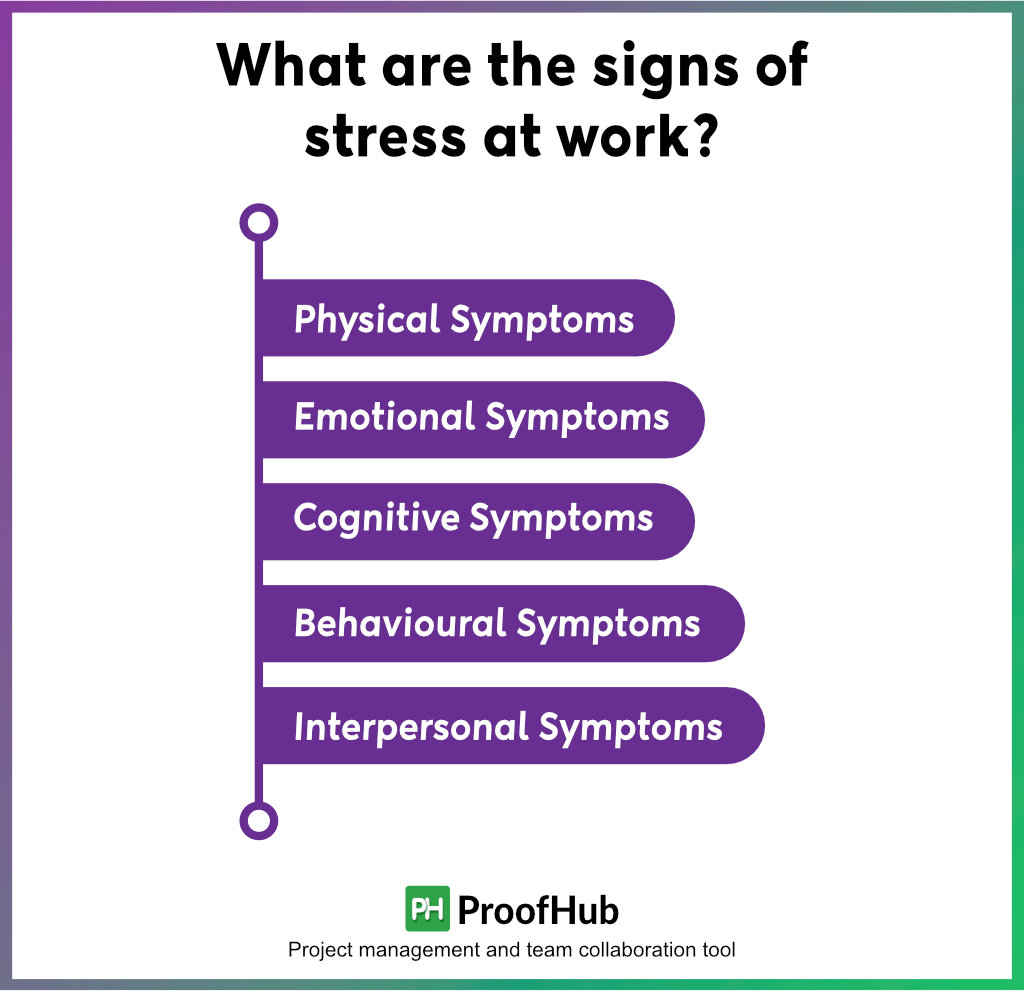
Here are some common symptoms of stress that employees should be aware of:
1. Physical symptoms
Stress can cause physical symptoms such as headaches, muscle tension, fatigue, sleep disturbances, and digestive problems. Employees who are experiencing stress may notice that they are frequently getting sick, experiencing chronic pain, or having trouble sleeping.
2. Emotional symptoms
Stress can also affect an employee’s emotional state, leading to symptoms such as anxiety, irritability, and mood swings. Employees who are experiencing stress may notice that they are more emotional than usual, and may have difficulty controlling their emotions.
3. Cognitive symptoms
Stress can affect an employee’s ability to think clearly and make decisions. Employees who are experiencing stress may notice that they are having trouble concentrating, remembering details, or making decisions.
4. Behavioral symptoms
Stress can also cause changes in behavior. Employees who are experiencing stress may become withdrawn, have trouble completing tasks, or may turn to unhealthy coping mechanisms such as substance abuse or overeating.
5. Interpersonal symptoms
Stress can also affect an employee’s relationships with coworkers and managers. Employees who are experiencing stress may become argumentative or defensive and may experience conflicts with their colleagues or superiors.
It’s important for employees to recognize these signs of stress and take action to address them before they become more serious. Implementing stress management strategies such as exercise, meditation, or seeking support from a mental health professional can help employees manage their stress and prevent more serious health issues from developing.
What is the importance of taking stress leave?
Taking stress leave is an important step that employees can take to protect their mental and physical health.
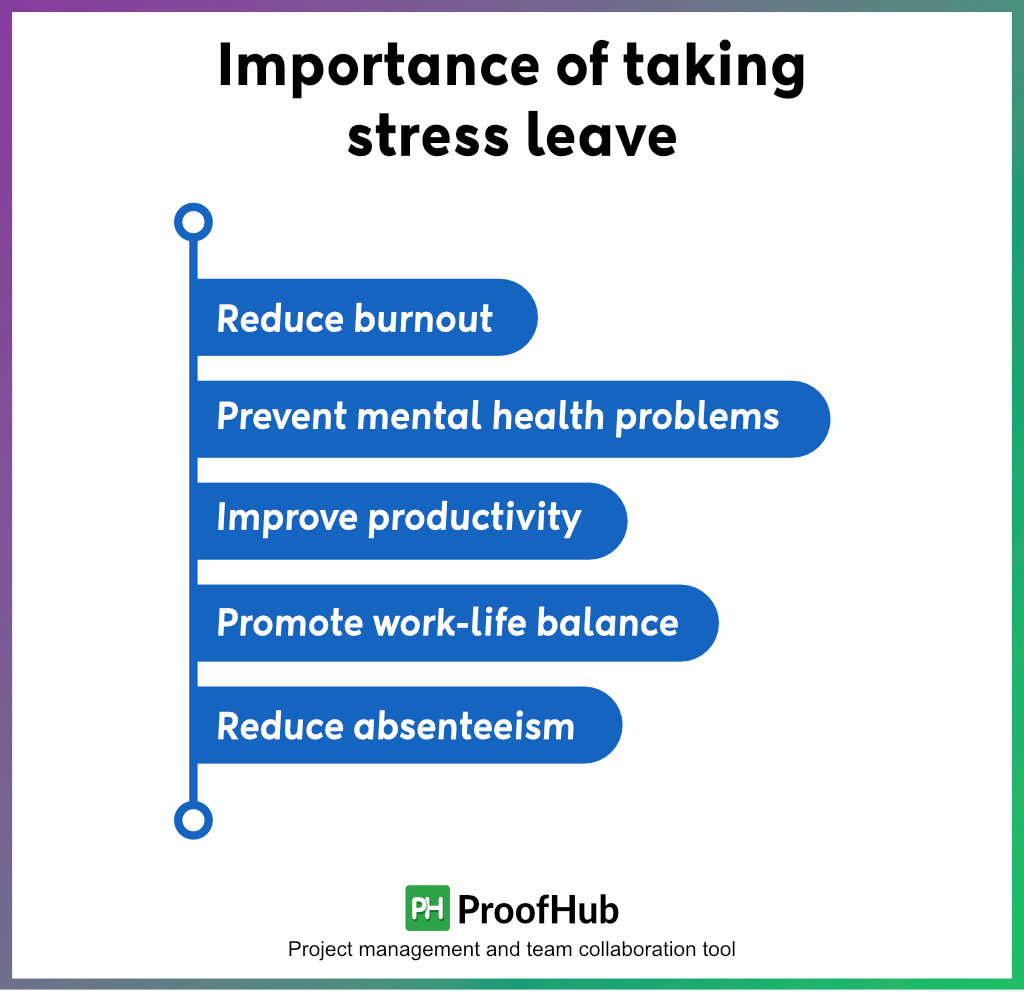
Here are some of the key reasons why stress leave is important:
1. Reduce burnout
Constant exposure to stressors in the workplace can lead to burnout, a state of emotional, physical, and mental exhaustion. Taking stress leave allows employees to take a break from work and reduce their risk of occupational burnout.
2. Prevent mental health problems
Untreated stress can lead to more serious mental health problems such as anxiety and depression. Stress leave can provide employees with the time they need to address their stress and seek professional help if necessary.
3. Improve productivity
Chronic stress can hurt job performance and productivity. By taking time off to rest and recuperate, employees can return to work with renewed energy and focus.
4. Promote work-life balance
Work-related stress can spill over into an employee’s personal life, affecting their relationships and overall well-being. Taking stress leave can help employees prioritize their personal lives and maintain a healthy work-life balance.
5. Reduce absenteeism
If left untreated, stress can lead to physical symptoms such as headaches, fatigue, and sleep disturbances, which can result in more frequent absenteeism. Taking work stress leave can help employees manage their stress and reduce the likelihood of needing to take additional sick days.
All in all, stress leave for work allows employees to take a break from work, address their stress, and return to work with renewed energy and focus. By prioritizing their mental health, employees can improve their job performance, reduce absenteeism, and promote a healthy work-life balance.
Steps on how to get a stress leave at work
If you are experiencing either of the symptoms mentioned above in the workplace, you should take a break and relax.
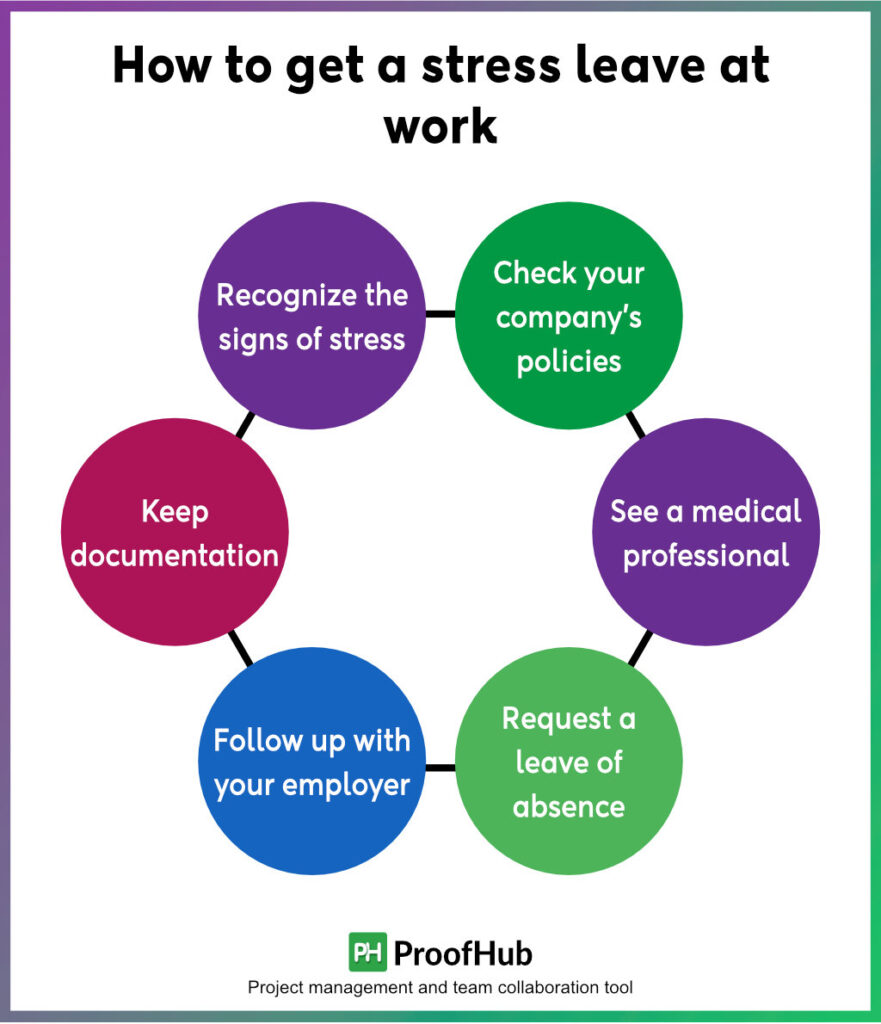
But, first, you have to follow a couple of steps to apply for a stress leave from work.
As per the Medical Leave Act FMLA, you can take up to 12 weeks of unpaid leave over a period of 12 months. However, first, you have to find out if the symptoms qualify for a stress leave from work.
So, given below are the steps you need to take to get the leave approved without any issues.
1. Recognize the signs of stress
Before you can request a stress leave, it’s important to recognize the signs of stress at work. These may include feeling overwhelmed, experiencing burnout, difficulty sleeping, anxiety, depression, and physical symptoms like headaches and stomach aches.
2. Check your company’s policies
Review your company’s policies to see what the process is for taking a leave of absence. This may include reviewing the employee handbook or speaking with your supervisor or HR representative.
3. See a medical professional
To request a stress leave, you will need documentation from a medical professional, such as a psychologist or psychiatrist, to verify that you need time off to address your mental health. Make an appointment with a mental health professional to discuss your situation and request documentation.
4. Request a leave of absence
Once you have documentation from a medical professional, you can formally request a leave of absence. This may involve submitting a written request that includes the reason for your absence, the expected duration of your leave, and any other details required by your company’s policies.
5. Follow up with your employer
After submitting your request, follow up with your employer to ensure that your leave has been approved and to clarify any questions or concerns they may have. Be prepared to discuss your needs and what you hope to achieve during your time off.
6. Keep documentation
Keep documentation of your stress leave, including the reason for your absence, the duration of your leave, and any communication with your employer. This may be useful if you need to request additional leave in the future or if there are any issues related to your leave. It’s important to remember that stress leave is a form of medical leave, and you have a right to take the time you need to address your health.
By following these steps and taking care of yourself, you can get the support you need to manage your stress, find motivation, and maintain your well-being.
Tips on how to get stress leave approved
Requesting stress leave from your boss can be a difficult and emotional task, but it’s important to remember that your mental health is a priority.
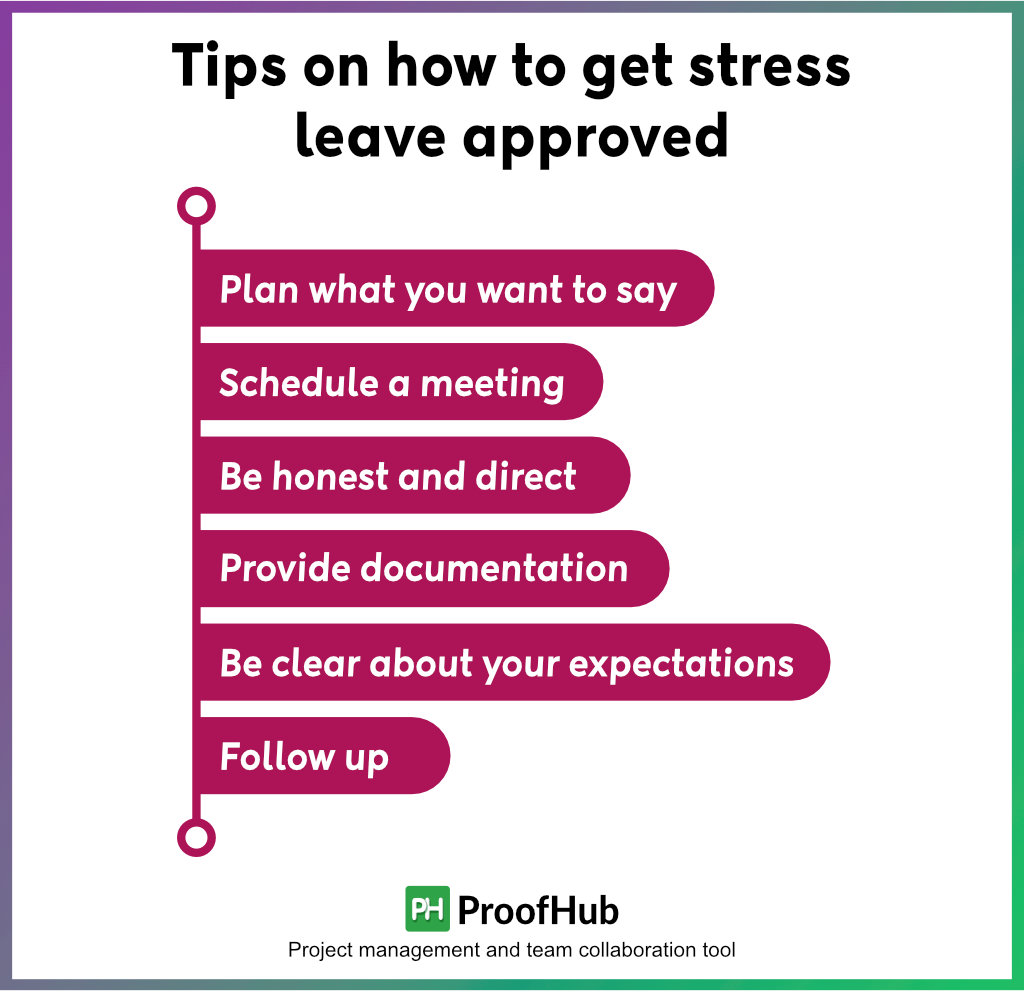
Here are some tips to help you get stress leave approved from your boss in a clear, concise, and professional manner:
1. Plan what you want to say
Before approaching your boss, take some time to plan out what you want to say. Make a list of the reasons why you need a stress leave, how long you expect to be away, and what you hope to achieve during your time off.
2. Schedule a meeting
Request a meeting with your boss to discuss your need for stress leave. Be sure to schedule it at a time when your boss is not likely to be distracted or rushed.
3. Be honest and direct
When discussing your need for stress leave, be honest and direct about the reasons why you need time off. Explain how being stressed from work is affecting your mental health and how a break would help you recover. This transparency will make it easier for your boss to understand the importance of taking time off work.
4. Provide documentation
To support your request, provide documentation from a medical professional, such as a psychologist or psychiatrist, that confirms the need for stress leave.
5. Be clear about your expectations
Make it clear to your boss how long you expect to be away and what you hope to achieve during your time off. This will help your boss plan for your absence and ensure that your workload is covered while you’re away.
Follow up: After your meeting, follow up with your boss to ensure that your request has been received and to clarify any questions or concerns that they may have.
By being honest, direct, and clear about your needs, you can help your boss understand your situation and get the support you need to manage your stress and maintain your well-being.
What to do on stress leave?
Taking a stressful leave from work might feel like a heavy burden has been lifted off your shoulders, but now it is your responsibility to work towards full recovery. Occupational stress can take a toll on both your mental and physical well-being, making it crucial to address its underlying causes. While you’re on stress leave, it’s important to take the time you need to focus on self-care and address any underlying issues that may be contributing to your stress.
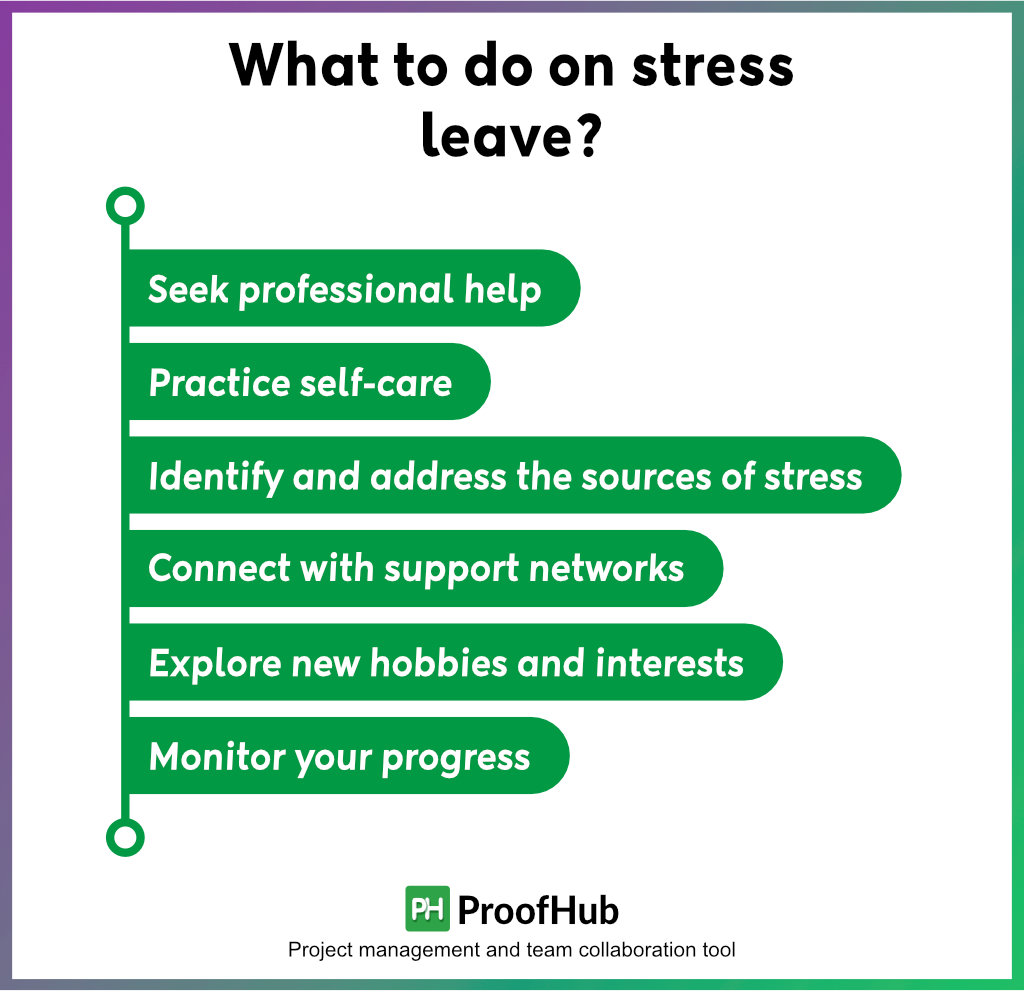
Here are some things you can do on stress leave:
1. Seek professional help
This may involve seeing a therapist, psychologist, or psychiatrist to discuss your mental health and develop a treatment plan. Professional help can provide you with the tools and support you need to manage your stress and improve your mental health.
2. Practice self-care
Taking care of yourself is essential during stress leave. This may include getting enough rest, eating a balanced diet, and engaging in physical activity. Self-care can also involve activities that help you relax and recharge, such as reading, meditation, or spending time in nature.
3. Identify and address the sources of stress
Use the time on stress leave to identify the sources of stress in your life and develop strategies for addressing them. This may involve setting boundaries, changing your work environment, or adjusting your work schedule.
4. Connect with support networks
Surround yourself with people who care about you and can provide emotional support. This may include family, friends, or support groups for individuals dealing with stress or mental health issues.
5. Explore new hobbies and interests
Stress leave can also be an opportunity to explore new hobbies or interests that you’ve been putting off. Engaging in activities that bring you joy and fulfillment can help improve your mental health and overall well-being.
6. Monitor your progress
Keep track of your progress and check in with yourself regularly to see how you’re feeling. This can help you identify any areas that may need additional attention and ensure that you’re on the right track.
Besides these, there are a couple of do’s and don’ts you should keep in mind while on a mental health leave from work.
Tips to return to work stress-free
Returning to work after a period of work-stress leave can be a challenging experience. It’s important to take the time you need to focus on your mental health and well-being and to develop a plan for managing stress and staying healthy when you return to work.
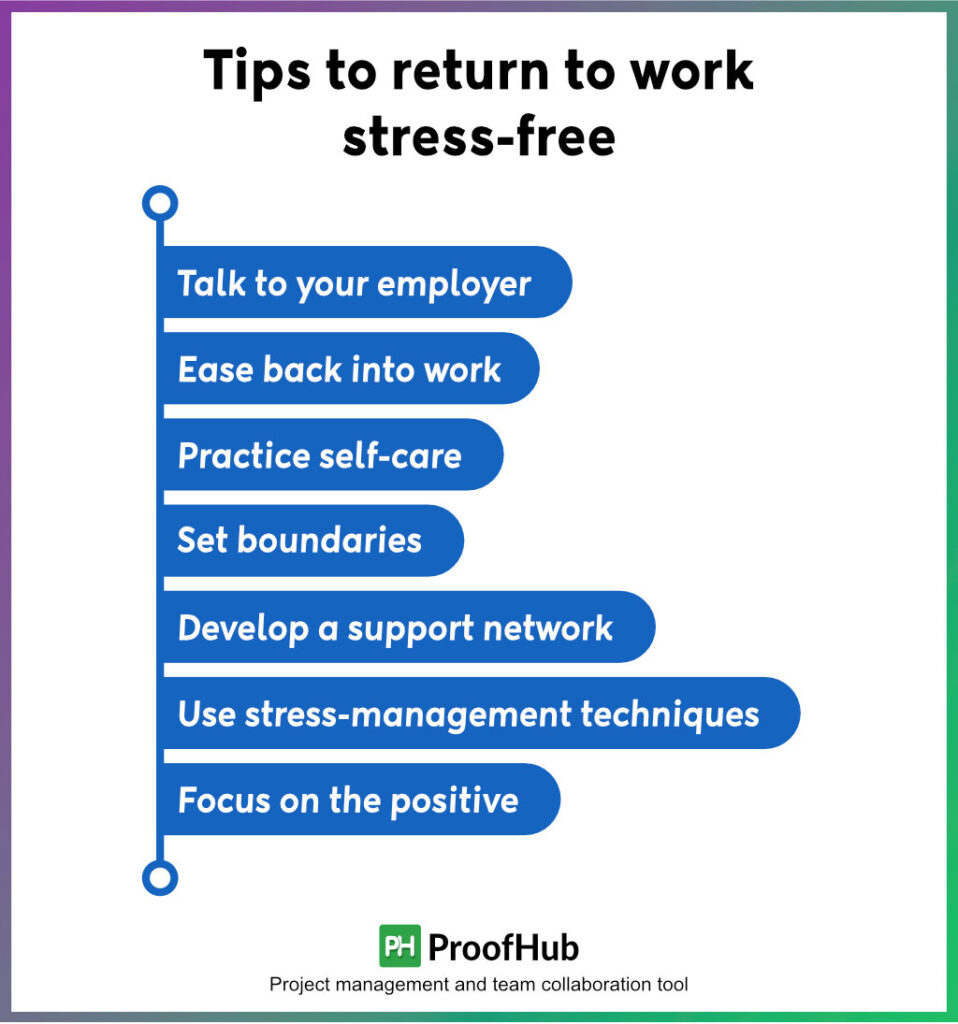
Here are some tips for returning to work stress-free:
1. Talk to your employer
Before returning to work, it’s a good idea to talk to your employer about your needs and concerns. This can help ensure that your return to work is as smooth and stress-free as possible.
2. Ease back into work
It’s important to ease back into work gradually, rather than trying to jump back in at full capacity. This may involve starting with shorter workdays, taking on lighter tasks, or working remotely for a while.
3. Practice self-care
Continue to practice self-care even after you return to work. This may involve taking regular breaks, getting enough sleep, and engaging in physical activity. Self-care can also include activities that help you relax and recharge, such as meditation, yoga, or spending time in nature.
4. Set boundaries
It’s important to set boundaries and prioritize your well-being when you return to work. This may involve saying no to tasks or requests that you don’t feel comfortable taking on, or taking breaks when you need them.
5. Develop a support network
Surround yourself with people who can provide emotional support and help you manage stress at work. This may include colleagues, friends, or family members.
6. Use stress-management techniques
Practice stress-management techniques such as deep breathing, meditation, or mindfulness to help you stay calm and focused when you feel overwhelmed.
7. Focus on the positive
Finally, focus on the positive aspects of your work and try to find enjoyment and fulfillment in your job. This can help you stay motivated and engaged, even when you’re dealing with stress.
Returning to work after a period of stressful leave can be challenging, but with the right support and strategies in place, it’s possible to return to work stress-free and with renewed energy and focus.
How can managers help reduce stress in the workplace?
Managers play an important role in reducing stress in the workplace. By creating a positive work environment and implementing strategies to manage stress, managers can help employees feel more supported, engaged, and productive.
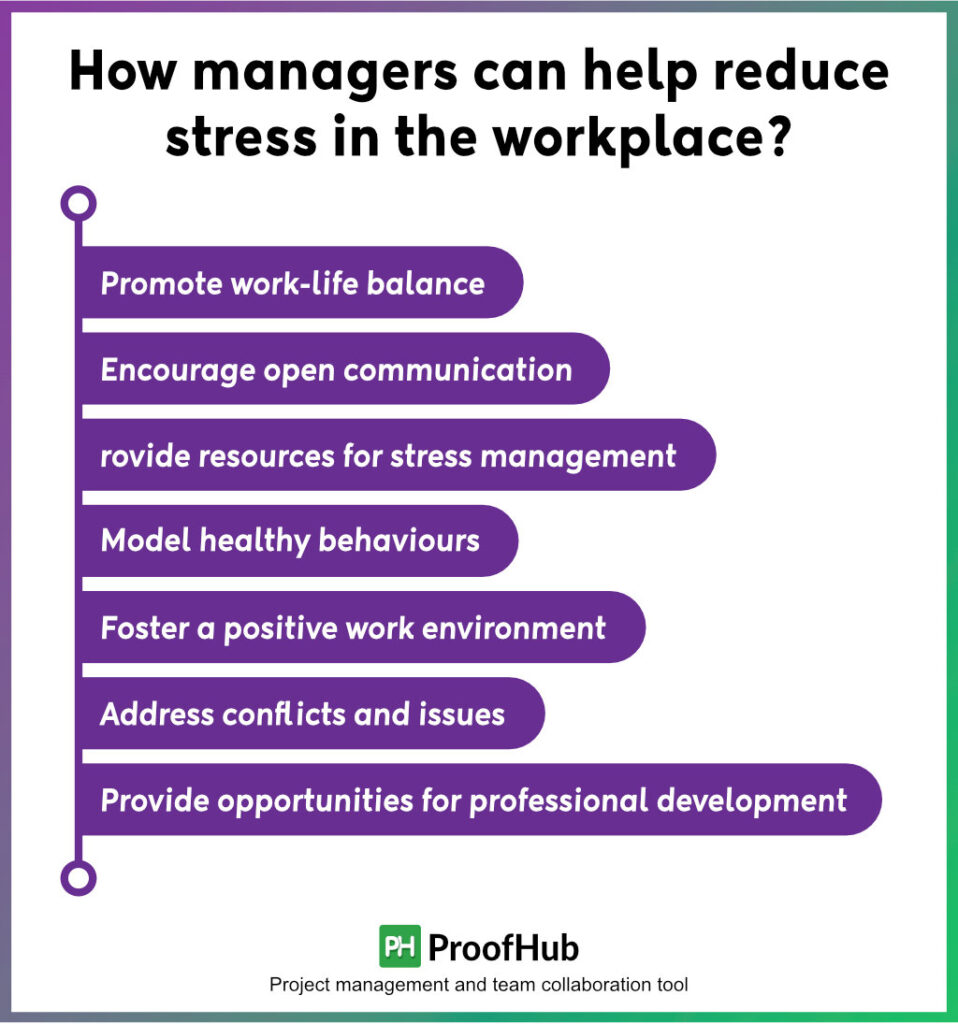
Here are some ways managers can help reduce stress in the workplace:
1. Promote work-life balance
Encourage employees to prioritize their well-being and take time off when they need it. This can include flexible work arrangements, such as telecommuting or flexible schedules, as well as policies that support work-life balance, such as paid time off or family leave.
2. Encourage open communication
Create a culture of open communication where employees feel comfortable expressing their concerns, asking for help, and providing feedback. Regular check-ins and team meetings can help ensure that everyone is on the same page and has a chance to share their thoughts.
3. Provide resources for stress management
Offer resources for stress management such as counseling services, stress reduction workshops, or mindfulness training. These resources can help employees learn effective coping strategies and feel more supported in managing stress.
4. Model healthy behaviors
Managers can set an example for healthy behaviors by taking breaks, managing their own stress, and practicing self-care. This can help create a positive work environment and reduce stress for employees.
5. Foster a positive work environment
Encourage collaboration, recognition, and appreciation in the workplace. This can help employees feel more engaged and motivated and can reduce stress by creating a positive work environment.
6. Address conflicts and issues
Address conflicts and issues in a timely and respectful manner. This can help prevent stress from escalating and can create a more positive and productive work environment.
7. Provide opportunities for professional development
Provide opportunities for employees to learn new skills and advance their careers. This can help increase employee engagement and reduce stress by creating a sense of purpose and fulfillment in the workplace.
By implementing these strategies, managers can help reduce stress in the workplace and create a more positive and productive work environment. This can lead to increased employee satisfaction, engagement, and overall success for the organization.
Conclusion
Requesting stress leave from work can be a difficult decision, but it is important to prioritize your mental health and well-being. By recognizing the signs of stress and taking proactive steps to manage it, you can avoid burnout and maintain a healthy work-life balance.
Remember, your health and well-being should always be a top priority, and taking the necessary steps to manage stress can benefit both you and your employer in the long run.
Additionally, using tools like ProofHub can help streamline your workflow and reduce stress by improving project management and team collaboration. ProofHub’s wide features help you in task tracking, deadline management, and team communication, ensuring a more organized and less stressful work environment.
FAQs
Is stress a valid reason to be off work?
A healthy mental and emotional balance lets you complete daily work with precision. But, if either of these becomes a cause of stress, you should take some time off work.
How do I leave stress at work?
Set deadlines for every task at work, do not check work emails after office hours, use the travel time to mentally declutter, and spend time on things you like.
Do I get full pay for stress leave?
Not every type of stress falls under the ambit of FMLA. But, if a doctor confirms that you suffer from work stress, you are eligible for pay during stress leave.
How do I talk to HR about stress leave?
Keep the necessary medical documents ready, inform HR about your condition, be clear to ask for FMLA, share the number of leaves you need, and specify the dates.
What are the 5 levels of stress?
The 5 levels of stress include Tunnel Vision, Blaming, Catastrophizing, Jumping to Conclusions, and Self-Blame.
How long can stress leave last?
You can take up to 12 workweeks of stress leave. Keep in mind, that these leaves do not have to be taken consecutively.

